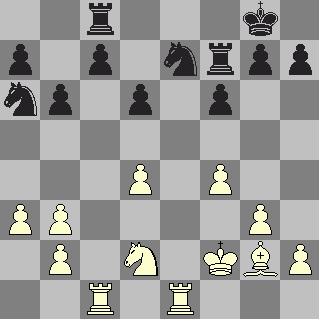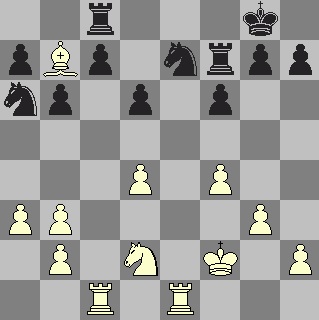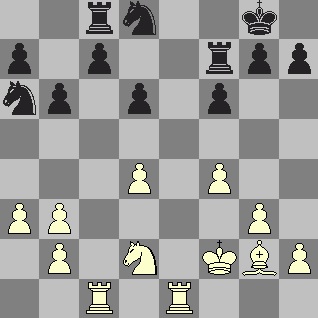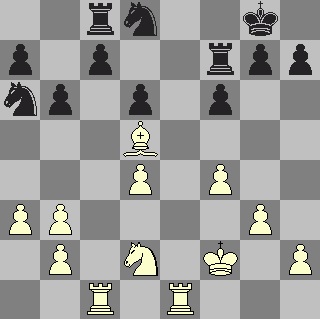Before September of 2015, very few chess book reviews mentioned the nearly-identical positions (NIP) method of instruction in the royal game. Beat That Kid in Chess was then published, perhaps the first chess book every written that systematically uses NIP in helping beginners grasp the essence of simple chess tactics.
If you already own a copy of Beat That Kid in Chess, the following diagrams will simply supplement what you learn in that chess book. (The NIP positions shown below are not found in the book.) If you don’t have that book, you can still benefit from this:

Diagram-1 with White to move
What can white do in Diagram-1? That can be a difficult question for a raw beginner, a player who has had little if any experience with chess tactics. Let’s look at three moves.
Rxe7 – The white rook near the white king captures a black knight
The black rook near the black king will then capture that white rook, giving Black an advantage of taking a rook (generally worth five points) at the expense of only a knight (generally worth three points). Rxe7 would be a mistake, for White gets no compensation for that loss of material (not even a pawn to show for that exchange).
Bd5 – The bishop moves to a central square, right in front of a black pawn
With the bishop then on the d5 square, it would attack and pin the rook that is near the black king. That rook cannot move to safety because that king would then be exposed to check from that bishop. Does that mean that White will win material, gaining a rook in exchange for a bishop? Not quite, for there’s a black knight on e7, next to that black rook, and that knight would capture the bishop on d5. So Bd5 would be a blunder, throwing away a bishop for no compensation.
But that bishop does appear to control a long diagonal leading to the upper left corner of the board. What about another bishop move in that direction?
Bb7 – The bishop moves almost as far as it can to the upper left
This move makes a double attack. On b7, the bishop is now attacking a rook and a knight, so one of those two black pieces will be captured by the bishop.

Diagram-2 White just moved the bishop to b7
From the first diagram, White moved the bishop to b7 making a double attack against two of Black’s pieces, shown in the second diagram. Black may move one of those two pieces, but the bishop will probably then capture the other piece. One exception is if black now moves Nb4, where it will threaten to move to d3, forking the white king and both white rooks. If the black knight on the upper left does move to the b4 square, however, the pawn at a3 will capture it, winning a piece for white.
But now let’s look at a different position, one similar to what we saw in Diagram-1:

Diagram-3 White to move
Please don’t immediately look for how this differs from the first diagram; we’ll get to that difference soon enough. What can the bishop now do on that long diagonal?
What about moving the bishop to b7, like we did earlier? There’s a problem with that move now, however, for the knight at d8 would capture the bishop after it moved to b7. But that bishop now has another option, a move that did not work in Diagram-1: Bd5.

Diagram-4 White just moved the bishop to d5
The bishop now pins the black rook that is on f7, meaning it cannot move because the king would be in check. This time, no black piece can capture that bishop on d5, so White will win material after capturing that rook.
Now we can see the difference between Diagram-1 and Diagram-3. Those two NIPs have one of the black knights in different positions: e7 and d8, yet that slight change in the placement of that knight makes a big difference in what White can do.
Consistent use of Nearly-Identical Positions in BTKC
Because of the systematic use of NIP in Beat That Kid in Chess, it may be the best chess book for beginners who know the rules of the game but little else.
###
.
The following five chess books were chosen, for this review, not for head-to-head competition but for comparing different skill levels of chess players.
Nearly-identical-positions in chess
Beat That Kid in Chess uses nearly-identical-positions in many of the diagrams. Yet how important are those little differences!
“A common weakness in the games of raw beginners is failing to see the many possibilities. When you see that a particular piece can move to a particular square, compare the resulting position with what it would be if you made a different move.”
.


